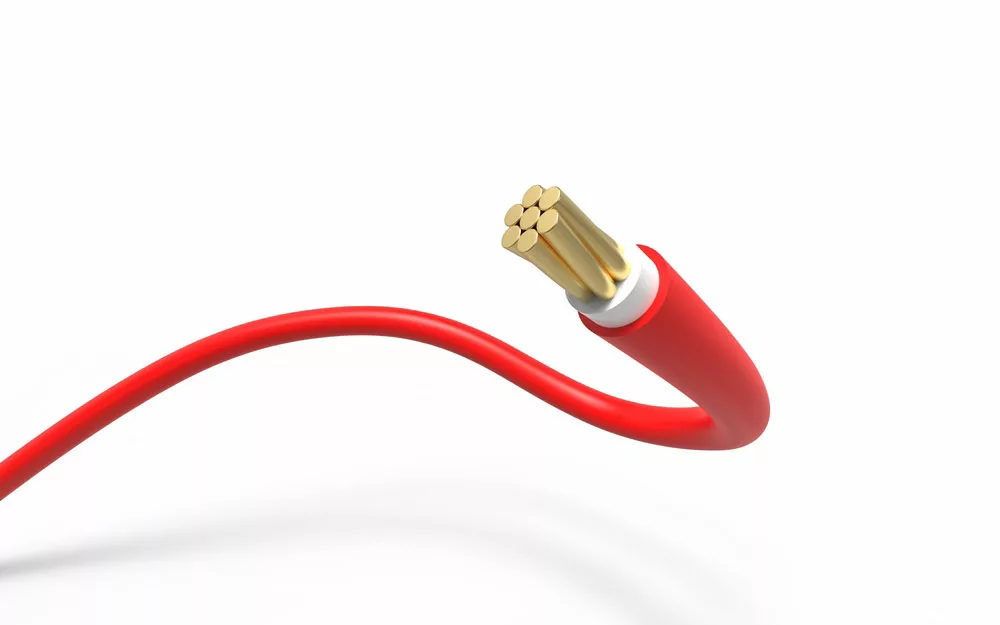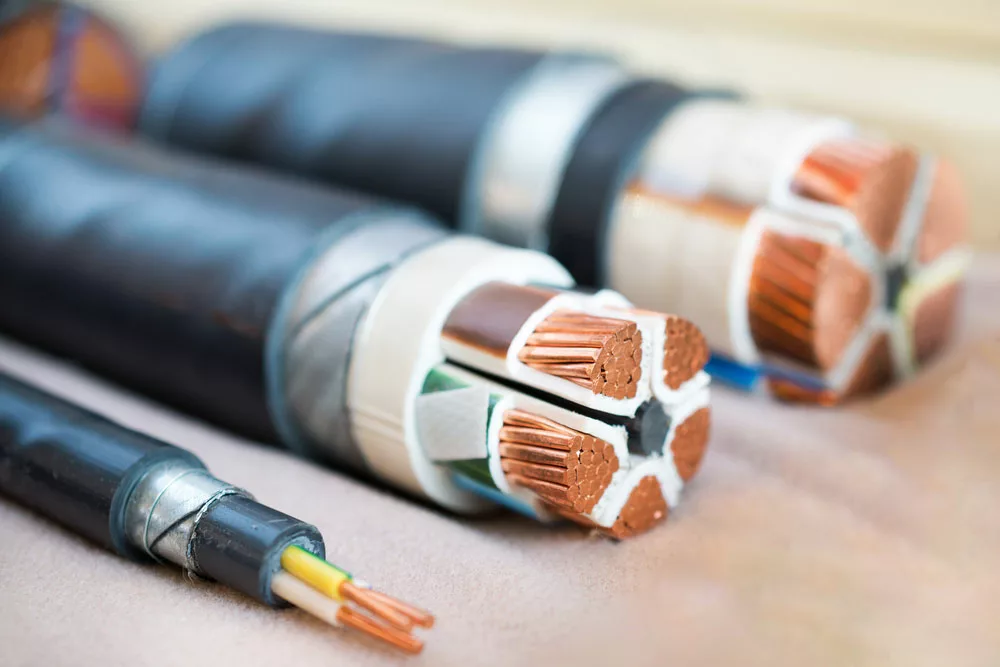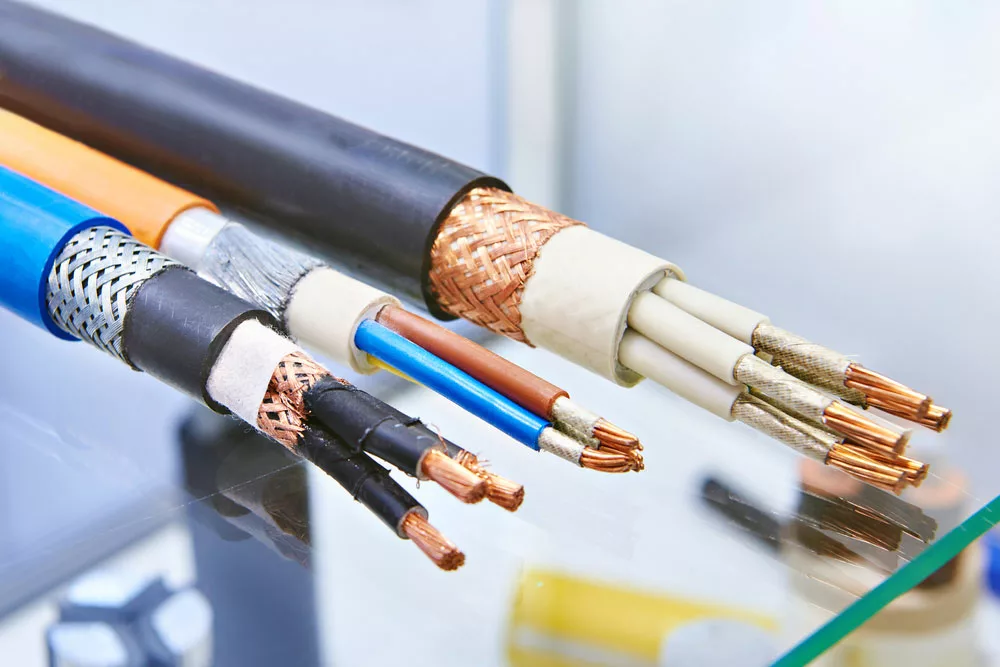About Power Cable Shielding, It’s no surprise that electromagnetic interference is one of the most notorious problems when dealing with wires. So, it’s necessary to understand the different options you can use to reduce its effects. And the power cable shielding is a viable option.
Cable shields are one of the best options for countering annoying electromagnetic interference. But you also have the option of unshielded cables, making your choice less straightforward.
So, are they different? Why choose one over the other? Let’s find out. This article will explore power cable shielding and pit them against their unshielded variants.
Table of Contents
- What are Shielded Cables?
- Why use Shielded Power Cables?
- How Does Power Cable Shielding Reduce EMI Effects?
- What are the Different Types of Cable Shielding?
- Power Cable Shielding vs. Unshielded Cables: What are the Differences?
- Do You Ground Both Ends of a Shielded Power Cable?
- How Do You Shield Electrical Cables?
- Last Words
What are Shielded Cables?

Red power cable
Shielded cables are wire variants with conductors and insulating layers encased in conductive shields. And manufacturers often make them from braided wire or metallic foil.
Usually, this protective cloak creates an outer layer, helping to block some electromagnetic interference received and generated by the cable. Unfortunately, power cables are an unavoidable EMI source in any environment.
How? They act as antennae by transmitting the interference to other devices or receiving intrusion. Typically, the EMI level depends on the equipment’s power requirements.
As a result, homes and offices will always have lower ambient EMI levels than factory floors. But, more importantly, the degree of shielding you’ll need on your cables will vary according to the interference level.
Why use Shielded Power Cables?

Three shielded power cables
Shielded cables can water the intensity and volume of various electrical noises & EMI. As a result, it mitigates the terrible effects and signal losses in transmission.
In addition, power cable shielding can stop crosstalk between two nearby wires. Further, the shielding secures cables and protects other people & machinery.
Shielding ensures the data you’re transferring stays protected from degradation due to EMI exposure. Surprisingly, this data quality loss is common in data centers, offices, and various industrial settings.
EMI is often externally generated and can affect electrical circuits through electromagnetic induction, conduction, and electrostatic coupling. This disturbance (whether artificial or natural) can dampen circuit performance or shut it down.
Hence, it’s necessary to shield power cables, especially for areas with high degrees of electrical equipment, computer technology usage, or electronic devices.
How Does Power Cable Shielding Reduce EMI Effects?

Power cable shielding
Shielding can help counter electromagnetic interference using two methods. First, it can reflect the interference, preventing it from escaping or entering the cable. Second, it can transmit interference to the ground.
In both cases, the shielding will either negate the EMI entirely or reduce its power, preventing it from having a noticeable effect on the conductors.
But, as mentioned earlier, the cable’s degree of shielding depends on various factors, including the ambient EMI present in your specified environment. Other influencing factors include cost, necessary diameter, flexibility, and weight.
What are the Different Types of Cable Shielding?
You can choose from two types of cable shielding, and they include:
Braided cables
Braided cables are shielding types featuring a mesh of woven copper wires. Although they don’t offer 100% shielding effects, braided shields are more durable than their foil counterparts.
Nevertheless, the braids’ shielding capacity depends on the type of weave. And various weave types may offer 70% to 95% coverage.
For stationary power cables, 70% coverage is enough to reduce EMI effects. In addition, copper manufacturers use braided cables for applications with high conductivity compared to aluminum or mylar foil.
Also, copper braided shielding protects the cable from internal damage, making them incredibly effective. But, this variant can be expensive and even increase cable footprints.
In addition, braided shields are heavier, more durable, and more efficient than foil shielding, making them perfect for industrial environments.
Foil and Mylar Shielded Cables
Unlike their braided counterparts, foil-shielded cables are lightweight, featuring thin sheets of copper or aluminum bonded to polyester. In truth, merging these two metals helps to enhance cable strength.
You can also call this shield cable type “tape shielding.” And it offers 100% EMI protection. As a result, no instance of EMI will penetrate any wire you wrap in foil or mylar shielding.
However, the foil inside the cable is delicate, making such cables tricky to work with–especially when using a connector. Regardless, tape shielding is ideal for noisy retail or office environments.
Can You Use Multiple Shielding Layers?
You can use multiple shielding layers for boisterous environments where each shielding type won’t work individually. For such cases, you can combine braided and foil shields to create the ultimate cable shielding.
In truth, both types are visible on some applications using multi-conductor cables. But sometimes, manufacturers may foil-shield individual pairs and braid (or foil-shield again) overall cables.
Foil shielding individual pairs can reduce the chances of crosstalk between a cable’s different pairs.
Power Cable Shielding vs. Unshielded Cables: What are the Differences?
True to their name, unshielded cables do not possess any shielding. Also, you can call them unshielded twisted pair cables (UTP), where manufacturers wrap individual wires in foil without adding extra protective layers.
So, what are the differences between them and cable shielding? Let’s take a look.
Applications
Shielded cables are the go-to option for noisy environments with high EMI chances and risks. Places like radio stations and airports are perfect instances of such environments.
You can also use shielded cables in security systems, helping to avoid power and radio frequency interference. As a result, you’ll enjoy reduced chances of false alarm triggering.
Shielded cables are also effective for box-build applications with various components working closely together. In addition, they work in recording or public address systems, helping to create a balanced audio configuration.
On the other hand, unshielded cables are perfect for applications that don’t require their shielded variants. For example, home and office LANs are inexpensive, flexible, and lightweight unshielded cables that work for less-noise applications.
Benefits
As mentioned, shielded cables can help prevent annoying EMI effects on people and equipment, reducing the chances of crosstalk between wires. Also, shielding adds extra insulation, protecting the cable from environmental elements.
As a result, shielded cables won’t easily suffer from abrasion, spills, moisture, or scraps, making them perfect for industrial environments.
In contrast, unshielded cables do not need grounding to operate. Hence, they help to save cost and installation time.
Do You Ground Both Ends of a Shielded Power Cable?
Shielded power cables are more effective when you surround them with conductive tunnels at ground potential. In other words, you should ground shielded power cables on both ends.
Note: Grounding on only one end would transform the other into an antenna for some frequencies.
How Do You Shield Electrical Cables?
You can shield a power cable by surrounding the insulation or assembly with a conducting and grounded medium. This process restricts the dielectric field to inside the shield.
Last Words
Most times, the cable you need depends on your application requirements. Nevertheless, always opt for high-quality, shielded, or unshielded cables.
Another thing to consider is your work environment. For example, shielded cables are the best for noisy locations like airports and radio stations.
Also, some settings may require foil-shielded cables, while others may accept braided variants. And some may demand a mix of both shielded cable types.
Do you have more questions? Don’t hesitate to contact us; we’ll gladly assist.
